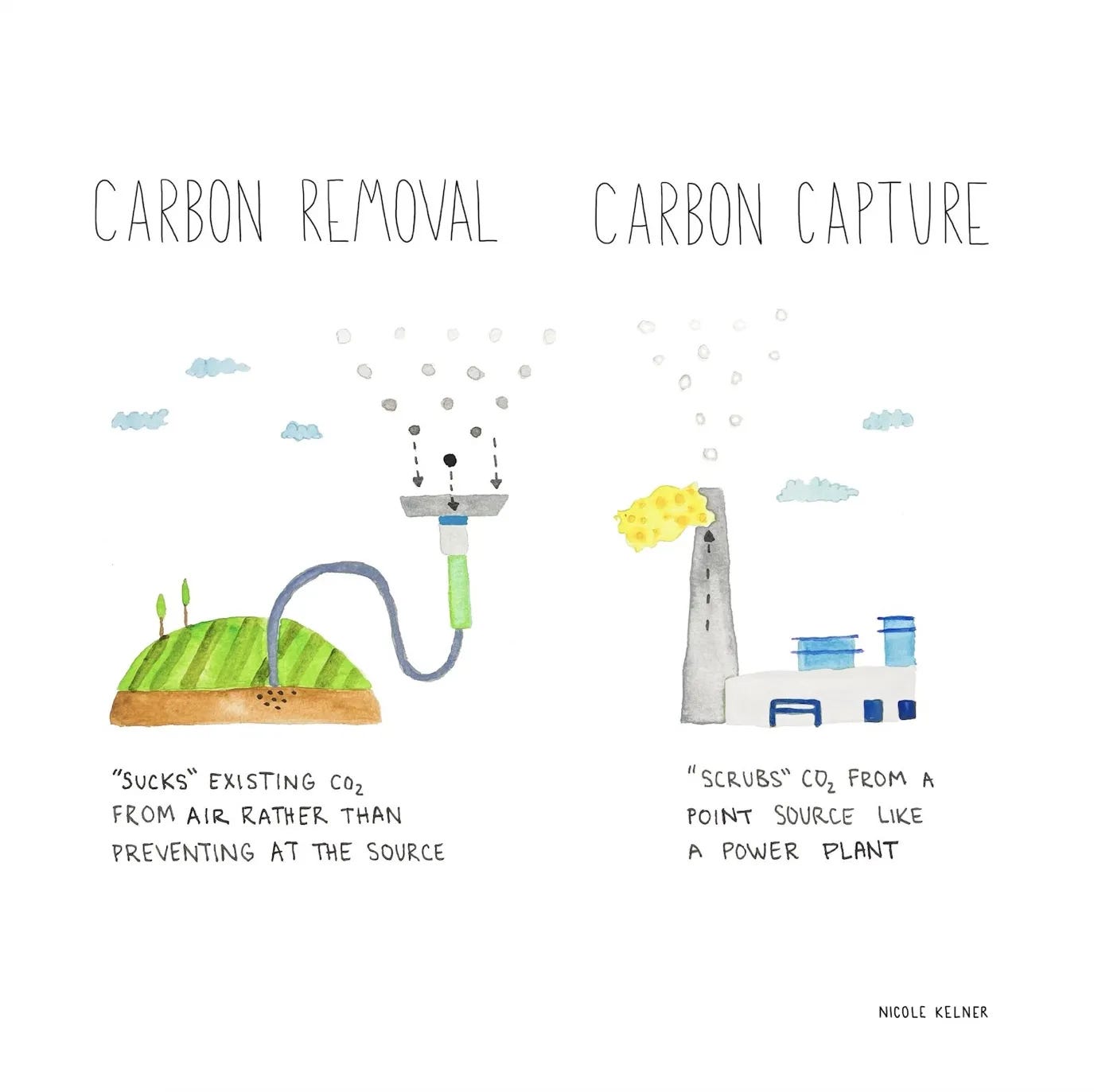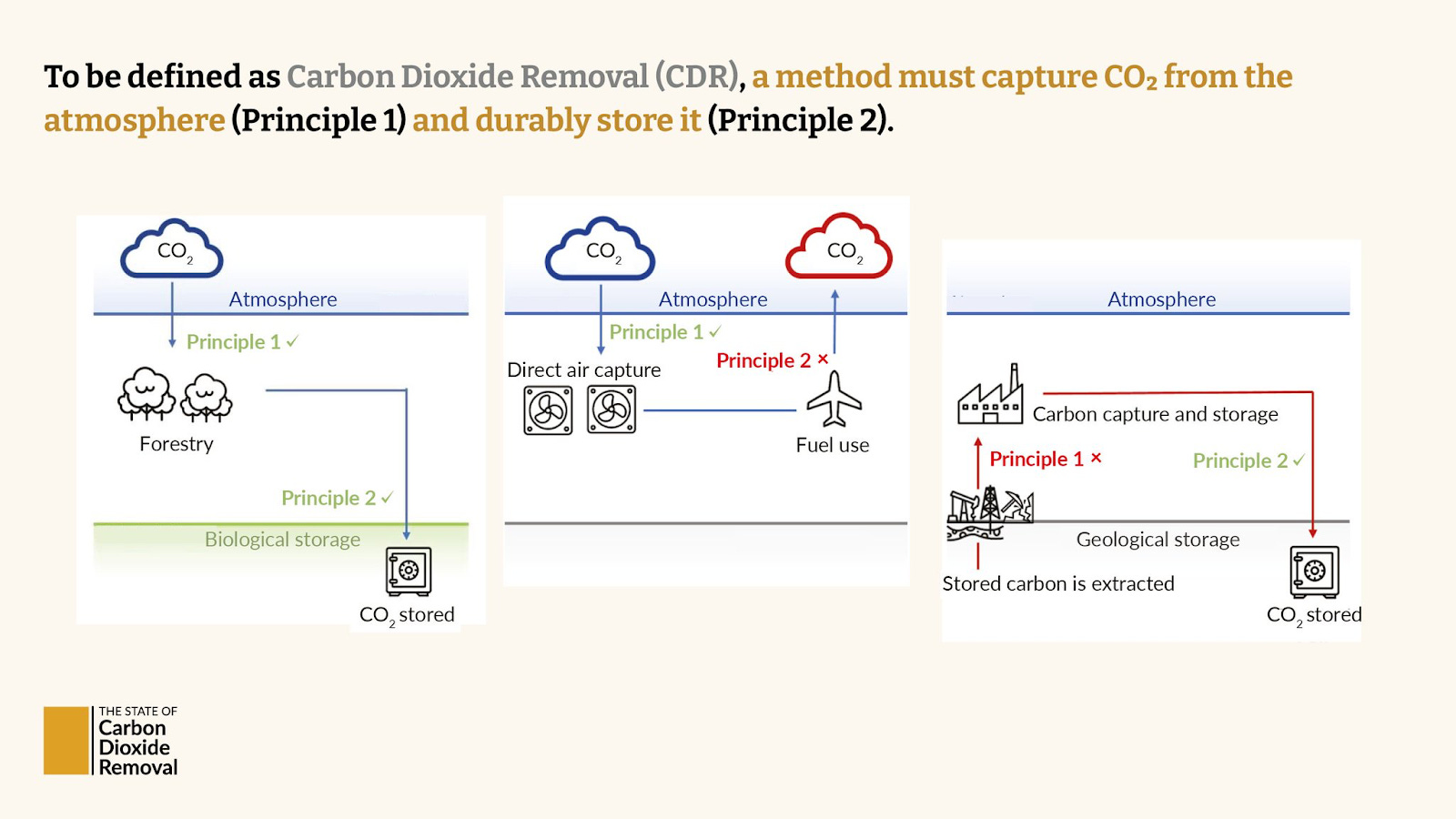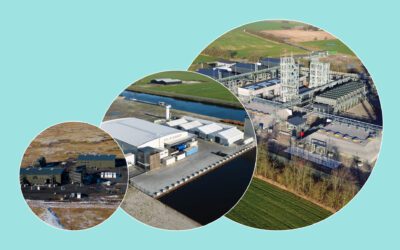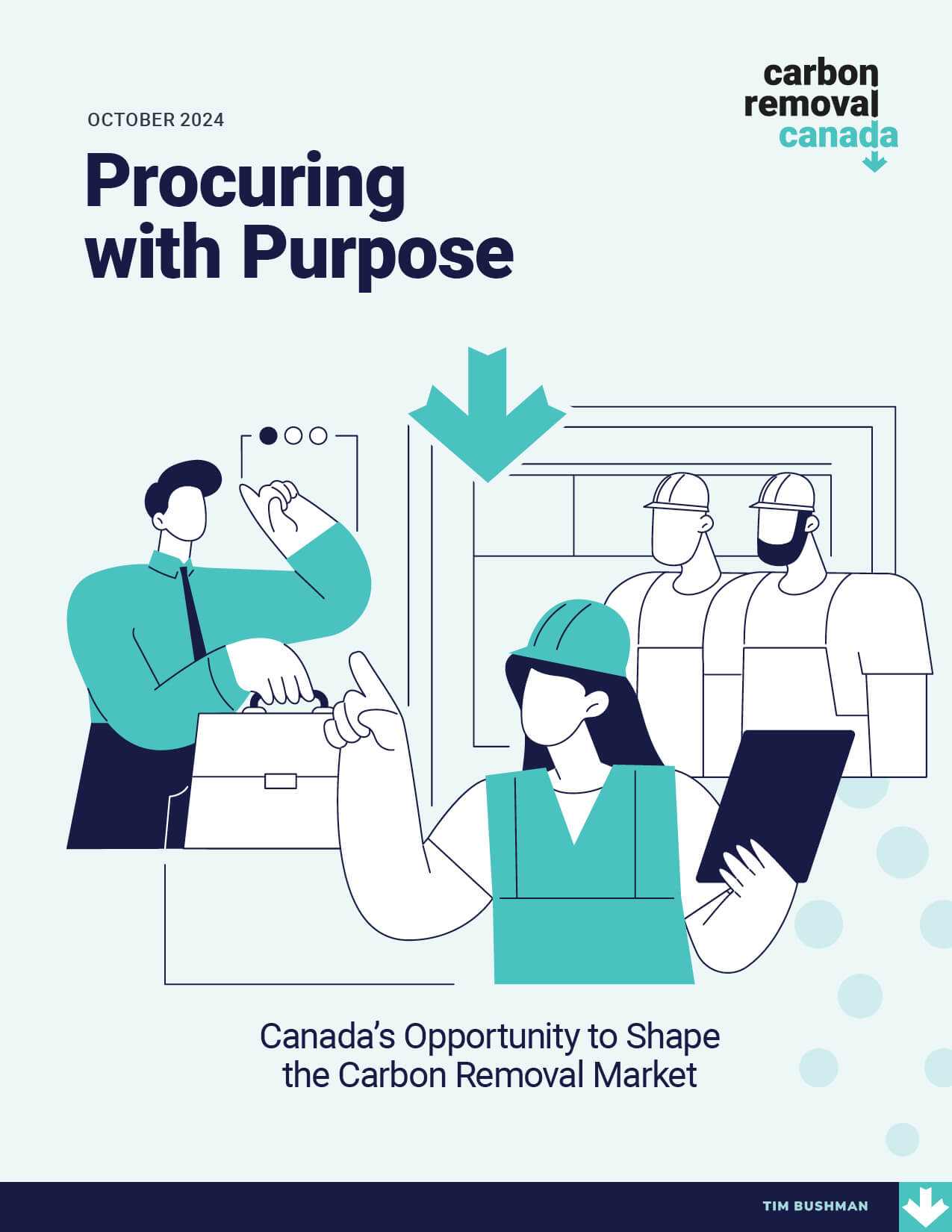A few weeks ago, Matthew Yglesias published this article on how carbon capture’s success in the United States hinges on streamlining the permitting and operation of Class VI carbon dioxide storage wells. Adding to my delight, half way through the article, he extolls the many virtues of carbon capture. Except… he wasn’t actually referring to carbon capture but direct air capture (which is considered carbon dioxide removal when paired with the subject of the article – carbon storage).
Yglesias is not alone in conflating “carbon capture” with “carbon removal”. It’s tricky to get the terminology right (I mean, direct air capture has the word “capture” in it). This recent CNN article incorrectly defines carbon capture and storage as “removing carbon dioxide from the atmosphere and storing it.” I am sure we can identify many, many more examples of media outlets getting this wrong. Let’s explore the difference between these terms and why getting it right is so important.

The difference between carbon removal (CDR) and carbon capture and storage (CCS) Source: Nicole Kelner by way of Carbon180
As Nicole Kelner’s illustration above shows – carbon dioxide removal (CDR) “sucks” existing carbon dioxide from the air, while carbon capture and storage (referred to as CCS) “scrubs” carbon dioxide from a point source. More officially, the UN’s Intergovernmental Panel on Climate Change defines CDR as follows:
CDR refers to anthropogenic activities that remove carbon dioxide from the atmosphere and store it durably in geological, terrestrial, or ocean reservoirs, or in products.
Carbon Gap released a good explainer last year on the difference between CDR, CCS, and carbon capture and utilization (CCU). Let’s summarize their explainer with some visual help below from the recently published State of Carbon Dioxide Removal report:
- Carbon Dioxide Removal (CDR) refers to removing carbon dioxide from the atmosphere and durably storing it, leading to negative emissions (illustration on the left)
- Carbon Capture and Utilization (CCU) is the reuse of captured carbon dioxide either directly or in products like fuels; some applications can be carbon negative, e.g., SAF (middle illustration)
- Carbon Capture and Storage (CCS) is the separation and durable storage of carbon dioxide from industrial exhausts; some applications can be carbon negative, e.g., SAF (illustration on the right)

Source: State of CDR
The latter two methods (CCU and CCS) are often referred to together as CCUS, and all three live under the umbrella of “carbon management”. Let me be clear – I’m not claiming one is superior to the others. We need all of them. However, they are distinct methods with different roles to play in fighting climate change.
The erroneous reference to CDR as “carbon capture” or the frequent inclusion of CDR as a subset of CCUS in media outlets may not seem like a big deal. CDR and CCUS are both climate beneficial. They both “trap” carbon dioxide in some way or another. So what’s the big deal?
I would argue that the correct distinction of CDR from CCUS matters – a lot.
Here’s why
- First and foremost, CDR and CCUS play very different roles in climate mitigation. As climate scientist Zeke Hausfather points out, CCUS competes with clean energy (like renewables), whereas CDR can reverse past emissions and counteract residual emissions from sectors that will be hard to fully decarbonize. As Hausfather points out: CCUS with fossil fuels is carbon neutral at best. CDR is carbon negative. CCUS risks prolonging fossil fuel use and CDR has potential moral hazard concerns. Given their different roles and associated risks in the road to net zero, governments will need to get this distinction right, especially as they face increasing pressure to establish separate targets for CDR in their climate plans.
- Most nascent CDR technologies share few similarities with CCUS. Despite some similarities with relatively mature CDR technologies, more novel CDR methods like ocean alkalinity enhancement or enhanced rock weathering don’t use amine-supported sorbents or require geologic storage like many CCUS projects do. They will therefore require a different set of supportive infrastructure, regulations, supply chains, measurement, reporting, and verification tools, and workforce training than those used to deploy large-scale CCUS projects.
- The CDR market could be massive. It’s hard to predict the size of this market decades in advance, but Stripe’s Nan Ransohoff’s back of the envelope math suggests to me that a market potentially this large deserves its own category:
- CCUS has been around for a while, while CDR is novel. CCUS has a track record … and baggage. Take this excellent article just published in Canadian Geographic. It lays out the history, achievements, and contradictions of CCUS projects in Canada … right alongside profiles of budding entrepreneurs piloting novel technologies to remove carbon dioxide from the atmosphere (all under the banner of “carbon capture”, of course). In the Yglesias article mentioned earlier, he states “we do not yet have scalable carbon capture technology”. Except we do – about 45 Mt of capture capacity from commercial facilities every year – if we’re defining it right. There is a lot to learn from CCUS in scaling up CDR, but these are ultimately two different industries with very different back stories. Conflating CDR and CCUS does both of them a disservice.
“The median estimate across [climate] models suggests we will need roughly six billion tonnes of annual CO2 removal by 2050,” says Ransohoff. “At, say, $100/t, six billion tonnes of carbon removal annually implies the need for $600bn of customer demand – every year.”
The implications of incorrectly distinguishing CDR from CCUS will only compound with time.
- First, it will complicate government efforts to design smart policies needed to responsibly grow the CDR industry and meet net zero goals.
- Second, it risks confusing communities who will need to assess their support for new CDR or CCUS projects.
- Finally, it will make it harder for media outlets and activists to accurately hold problematic projects and bad actors to account.
With the rapid growth of the entire suite of carbon management methods on the horizon, let’s resolve to clarify this distinction in 2024.







